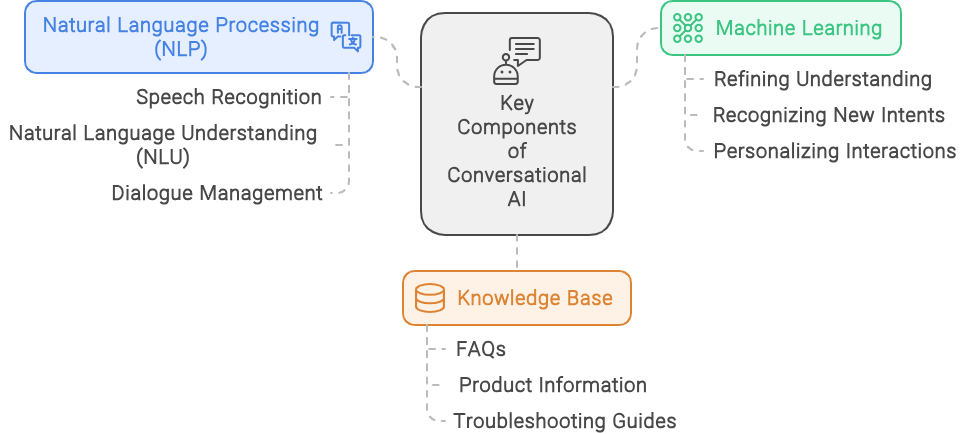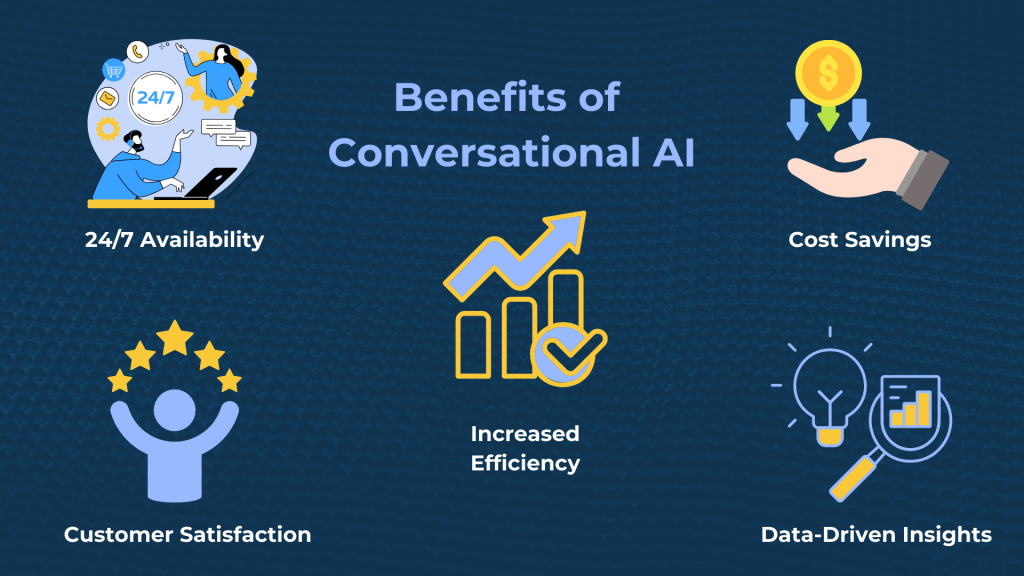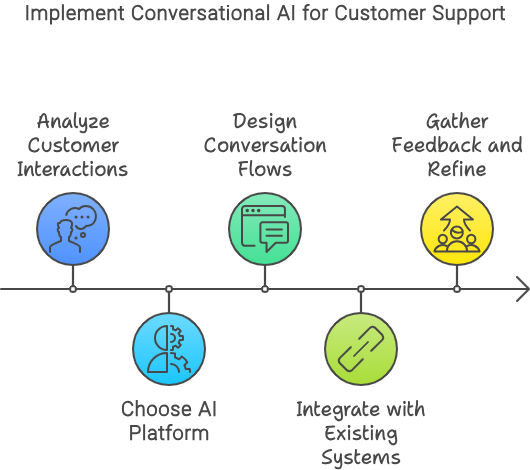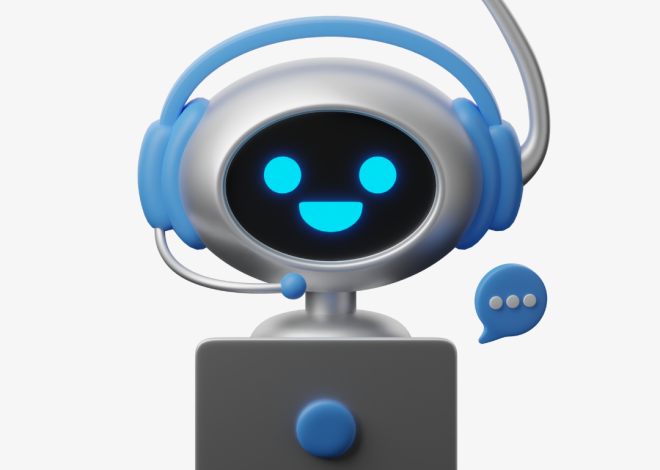
What is Conversational AI: A Comprehensive Guide for Boosting Customer Support Efficiency
In today’s digital age, customer service expectations are soaring. Businesses constantly seek innovative ways to deliver faster, more efficient, personalized support experiences. This is where Conversational AI, a rapidly evolving technology steps in as a game-changer.

What is Conversational AI?
Conversational AI, also known as conversational interfaces or chatbots, refers to artificial intelligence (AI) that enables machines to simulate natural human conversation.
These AI-powered systems can understand and respond to user queries through text or voice interactions, mimicking how humans communicate.
Key components of Conversational AI

1. Natural Language Processing (NLP)
This critical component lies at the heart of conversational AI, allowing the system to understand the intent and meaning behind user queries.
NLP employs a combination of techniques, including:
- Speech Recognition: Converting spoken language into text for machine comprehension.
- Natural Language Understanding (NLU): Identifying the intent and sentiment behind user words.
- Dialogue Management: Managing the flow of conversation and determining the next appropriate response.
2. Machine Learning
Conversational AI leverages machine learning algorithms to continuously learn and improve its performance. By analyzing vast amounts of conversation data, the system can:
- Refine its understanding of natural language nuances.
- Recognize new user intents and adapt to their responses accordingly.
- Personalize interactions based on user behavior and past interactions.
3. Knowledge Base
This component acts as the brain of the Conversational AI system, storing the information it needs to answer user queries accurately. It can include:
- Frequently Asked Questions (FAQs) and their answers.
- Product information and specifications.
- Troubleshooting guides and support documentation.
How Does Conversational AI Work?
The process of Conversational AI can be broken down into these steps:

1. User Input
The user interacts with the AI system through text or voice commands.
2. NLP Analysis
NLP processes the user input, analyzing the intent and meaning.
3. Knowledge Base Search
The system searches the knowledge base to find the most relevant response based on the user’s query.
4. Machine Learning Integration
Machine learning algorithms personalize the response based on user data and past interactions.
5. Response Generation
The system formulates a response in natural language that addresses the user’s query
Use Cases of Conversational AI
Conversational AI offers a wide range of applications across various industries, revolutionizing customer support operations. Some of them are
Customer Support
Chatbots and virtual assistants streamline customer support operations across industries. They can answer inquiries, provide product information, and guide users through various processes, improving response times and customer satisfaction.
E-commerce
AI-powered chatbots enhance the online shopping experience by answering product questions, offering personalized recommendations, and assisting with checkout. This leads to increased sales and improved customer engagement.
Finance
Virtual assistants in banking can handle account management tasks, answer financial queries, and process simple transactions. This improves efficiency and provides 24/7 service to customers.
Healthcare
Conversational AI in healthcare offers initial symptom assessments, appointment scheduling, and basic medical information. This improves patient experience and reduces the workload on medical staff.
Telecommunications
AI chatbots assist with troubleshooting connectivity issues, answering billing inquiries, and providing self-service options for account management. This reduces call center volume and improves customer service efficiency.
IT Management
Chat and voice assistants in IT help with ticket routing, asset management, and guided troubleshooting. They can walk users through common IT issues, reducing the workload on human IT staff and improving resolution times.
HR Automation
In human resources, conversational AI facilitates employee onboarding, answers frequently asked questions and provides personalized recommendations. This streamlines HR processes and improves the employee experience from hiring to retirement.
Benefits of Implementing Conversational AI
Businesses that embrace Conversational Assistants can reap a multitude of benefits

24/7 Availability: Provide seamless customer support around the clock, even outside business hours.
Increased Efficiency: Reduce call center workload by automating routine inquiries and freeing human agents for complex issues.
Improved Customer Satisfaction: Offer faster resolution times, personalized interactions, and a more convenient service experience.
Cost Savings: Reduce operational costs associated with maintaining large call centers.
Data-Driven Insights: Gather valuable customer data from interactions, enabling a better understanding of customer needs and improving service offerings.
Challenges of Conversational AI
While highly beneficial, Conversational Agents also present certain challenges to consider:
Limited Understanding of Complex Queries: Current AI systems may struggle to interpret complex or nuanced user questions.
Data Security and Privacy Concerns: Businesses must comply with data privacy regulations when collecting and utilizing customer data.
High Implementation Costs: Developing and maintaining advanced AI systems can involve significant upfront costs.
Maintaining Context: Ensuring continuity and retaining context across multiple interactions can be challenging.
Companies Providing Conversational AI Software
a. Google Dialogflow
b. IBM Watson Assistant
c. Microsoft Azure Bot Service
d. Amazon Lex
e. Salesforce Einstein Bots
f. ARThink AI
Ready to Implement Conversational AI?
Here’s What You Need to Do

1. Identify Your Customer Support Needs
Analyze your current customer interactions and pinpoint areas where AI can automate routine tasks or provide initial support.
2. Choose the Right Conversational AI Platform
Research and compare different Conversational AI software providers to find a solution that aligns with your budget, technical expertise, and specific needs.
3. Develop Engaging Conversation Flows
Design natural and engaging conversation flows that guide users toward solutions and provide a positive experience.
4. Integrate with Existing Systems
Ensure seamless integration of your Conversational AI system with your existing CRM or support ticketing platforms.
5. Gather Feedback and Refine
Continuously monitor user interactions, gather feedback, and refine your Conversational AI system to improve performance and optimize customer experience.
By taking these steps and embracing Conversational AI, you can empower your customer service team, enhance customer interactions, and future-proof your business in the age of the ever-evolving customer journey.
Conclusion
Conversational AI presents a powerful opportunity for businesses to transform their customer support operations. By automating routine tasks, providing 24/7 availability, and enabling personalized interactions, AI can significantly enhance customer satisfaction and drive business growth.
While challenges exist around complexity and data privacy, the potential benefits of Conversational AI are undeniable. As AI technology continues to evolve, these challenges will be addressed, paving the way for even more sophisticated and user-friendly conversational experiences.
Ready to make your business smarter?
Implement conversational AI before your competitors’ bots start gossiping about you!
FAQs
Will Conversational AI replace human customer service agents entirely?
Conversational AI is not designed to completely replace human agents. Instead, it serves as a powerful tool to automate repetitive tasks and augment the capabilities of human agents. AI can equip agents with real-time data, suggested responses, and knowledge base articles, enabling them to provide a more efficient and personalized service.
2. How can I measure the success of my Conversational AI implementation?
There are several key metrics to track the success of your AI system, including:
- Customer satisfaction scores (CSAT)
- Net Promoter Score (NPS)
- Average resolution time (ART)
- Number of inquiries handled by AI
- User feedback on the conversational experience
3. Is my business data secure when using Conversational AI Assistants?
Data security is a crucial concern. Choose a provider that prioritizes data security and adheres to relevant data privacy regulations such as GDPR and CCPA.


